Ankle sprains, and more specifically lateral ankle sprains, are one of the most common injuries to occur in a wide variety of sports/activities. You could miss a step on the stairs and roll your ankle. It could happen after you land from catching a ball in a match. Or you could even sprain your ankle after celebrating a hole-in-one at the Par 3 Tournament at the Masters - just ask Tony Finau.
The silver lining for an injury that is very common is that there tends to be a lot of research into the specifics of that injury from the injury mechanism, to relevant risk factors, and how to best prevent future injury. Unfortunately we have not cracked this nut just yet as there is a very high rate of recurrence of ankle sprains after the initial injury. It is for this reason that one of the leading researchers in this field has stated that there is no such thing as a “simple ankle sprain” (Prof Eamonn Delahunt in University College Dublin).
Even though we have not perfected the prevention of future injury we have got a strong grasp as to how best manage acute injuries.
The first step that your physiotherapist should take when assessing an acute ankle injury is to rule out the possibility of an accompanying fracture. Although less common than a ligament sprain, these injuries do happen and there are very simple rules that can be followed to determine if an X-ray is required. The Ottawa ankle rules (see below) can be used with confidence to suspect a fracture has happened as part of the injury. The five rules are as follows:
Bony tenderness along distal 6 cm of posterior edge of fibula or tip of lateral malleolus
Bony tenderness along distal 6 cm of posterior edge of tibia/tip of medial malleolus
Bony tenderness at the base of 5th metatarsal
Bony tenderness at the navicular
Inability to bear weight both immediately after injury and for 4 steps during initial evaluation
In the case of most ankle sprains, there will be no fracture and we can be safe to proceed to treat the injury as a ligament sprain without the need for any further imaging such as an MRI. The more advanced imaging will provide greater clarity as to the extent of the damage suffered but ultimately it will do very little to alter the management strategy for rehabilitation.
With a ligament injury, it is important to allow healing to take place within the damaged ligament. As such, a period of relative rest will be crucial to assure that the ligament is not put any further undue stress while acutely damaged. If you are unable to weight bear without significant pain, then the use of crutches or an orthopaedic boot will be very useful in the first few days. Once you can tolerate taking your weight through your foot, the rehab process can begin in earnest.
Restoration of ankle function is the first hurdle to overcome. Tolerance of weight-bearing, range of motion, and normalising your gait will form this period of rehab. The landscape can change overnight for a lot of patients and they will get back to normal function with basic daily movements such as driving, stairs, walking etc without many problems. Patience will be tested here as they will feel like a return to sport is just around the corner. However, we know the rates of tissue healing in different tissues and ligaments will take a few weeks to sufficiently heal if there has been swelling and bruising in the days following injury. Going back to sport before then will put you at risk of spending more time with your physiotherapist as you re-injure the ligament all over again.
The next stage of the rehab process will be to return strength levels to pre-injury levels or to improve them if that strength was insufficient in the first place. In addition to strength, your power and rate of muscle recruitment will need to developed through plyometric exercises and running drills.
Running and agility drills will probably be the most challenging aspect of the rehab process. These exercises will be the most demanding in terms of ankle stiffness during the acceleration and deceleration phases. A progressive, pre-planned programme should be followed as much as possible. Once you have overcome a task of a specific difficulty, you should move onto the next challenge. Variables such as speed, running surface, angle of turning, with/without ball, with/without opponent, and recovery time should all be adjusted to challenge you.
Once given the all clear to return to sport, the best evidence suggests that you should complete at least four individual training sessions prior to competing in a match. This will reduce the likelihood of reinjury significantly.
Those who have suffered an ankle injury should integrate ankle specific exercises into their training programmes so as to continue to improve all the metrics that we use to measure ankle function. This will give you the best chance of avoiding further injuries that can lead to a condition known as chronic ankle instability (CAI).
While this rehab process is underway, it is important to retain your normal training programme as much as possible. Rehab should be training in the presence of an injury. Do not let an ankle injury cause the rest of the body to become deconditioned.



